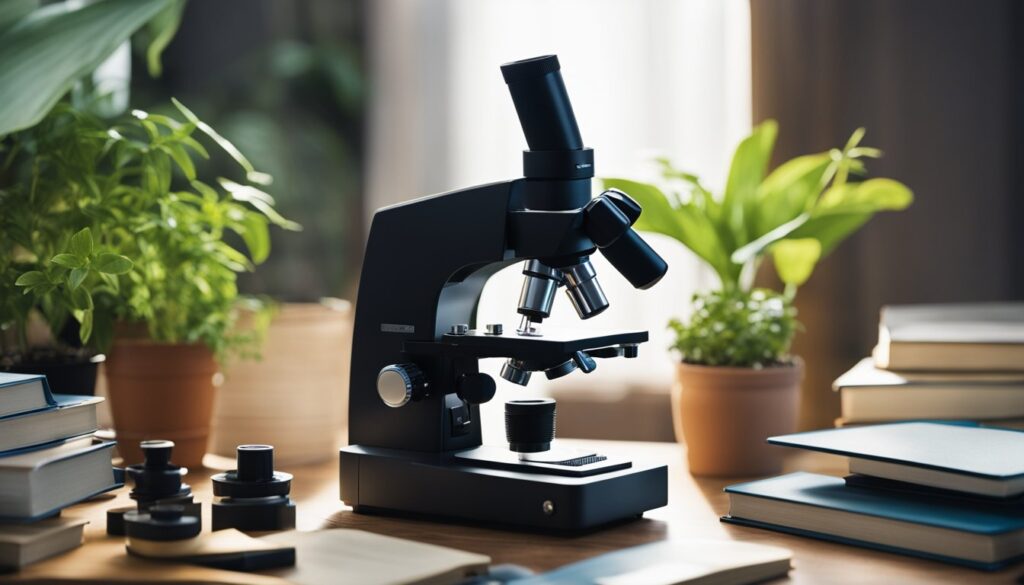If you’re planning on taking the MCAT exam, you’re probably feeling a bit overwhelmed. The MCAT is a challenging test that requires you to have a deep understanding of key biological concepts. It’s crucial to prepare for the exam by reviewing all of the material that will be tested, including biology.
The biology section of the MCAT exam covers a wide range of topics, including biochemistry, molecular biology, genetics, and physiology. You’ll need to have a strong foundation in biology to do well on this section of the exam. This is where an in-depth review of key biological concepts tested on the MCAT exam comes in handy.
In this article, we’ll provide you with a comprehensive review of the biology concepts you’ll need to know for the MCAT exam. We’ll cover everything from the structure and function of cells to the intricacies of the human body. Whether you’re just starting to study for the MCAT or you’re looking to brush up on your biology knowledge, this article will provide you with the information you need to succeed on the biology section of the MCAT exam.
Fundamental Biological Principles

To achieve a great score on the MCAT Biology section, you need to have a solid grasp of fundamental biological principles. This section will review the key concepts that are tested on the MCAT exam.
Biomolecules and Their Interactions
Biomolecules are the building blocks of life. Understanding their structure and function is essential for success on the MCAT. You will need to be familiar with the different types of biomolecules, including carbohydrates, lipids, proteins, and nucleic acids, as well as their interactions with each other and with other molecules in the body.
Carbohydrates are important for energy storage and cell structure, while lipids play a critical role in cell membranes and energy storage. Proteins are involved in a wide range of cellular processes, including enzyme catalysis, transport, and signaling. Nucleic acids, such as DNA and RNA, carry genetic information and are essential for protein synthesis.
Cellular Structure and Function
Cells are the basic unit of life, and understanding their structure and function is crucial for success on the MCAT. You will need to be familiar with the different types of cells, including prokaryotic and eukaryotic cells, as well as their organelles and their functions.
Prokaryotic cells are simpler in structure than eukaryotic cells and lack a nucleus. Eukaryotic cells have a nucleus and are more complex in structure. Both types of cells have organelles that perform specific functions, such as mitochondria for energy production and lysosomes for waste removal.
Energy and Metabolism
Energy and metabolism are essential concepts for success on the MCAT. You will need to be familiar with the different types of energy, including kinetic and potential energy, as well as the laws of thermodynamics.
Metabolism is the set of chemical reactions that occur in living organisms to maintain life. You will need to understand the different metabolic pathways, including glycolysis, the citric acid cycle, and oxidative phosphorylation. Additionally, you will need to be familiar with the different types of enzymes and how they catalyze reactions.
By reviewing these fundamental biological principles, you will be well-prepared to tackle the MCAT Biology section.
Genetics and Evolution

Genetics and evolution are important topics to understand for the MCAT Biology section. In this section, we will review the key concepts you need to know to succeed on the exam.
Molecular Genetics
Molecular genetics is the study of DNA and how it codes for proteins. The structure of DNA is a double helix made up of nucleotide bases, including adenine, thymine, guanine, and cytosine. RNA is a single-stranded molecule that is transcribed from DNA and used to create proteins through a process called translation.
There are different types of mutations that can occur in DNA, including point mutations, insertions, and deletions. These mutations can have varying effects on protein function and can lead to genetic disorders.
Inheritance Patterns
Inheritance patterns describe how traits are passed down from parents to offspring. Mendelian genetics is the study of how traits are inherited through dominant and recessive alleles. Punnett squares can be used to predict the probability of offspring inheriting certain traits.
Non-Mendelian genetics refers to inheritance patterns that do not follow simple dominant and recessive patterns. This includes sex-linked traits, incomplete dominance, and codominance.
Evolutionary Biology
Evolutionary biology is the study of how species change over time through natural selection, genetic drift, and gene flow. Natural selection is the process by which organisms with advantageous traits are more likely to survive and reproduce. Genetic drift refers to random changes in gene frequencies in a population, while gene flow is the transfer of genes between different populations.
Understanding the principles of genetics and evolution is essential for success on the MCAT Biology section. Be sure to review these concepts thoroughly and practice applying them through practice questions and passages.
Human Physiology

Human physiology is the study of how the human body functions. It is a critical subject in MCAT Biology, as it covers many key biological concepts tested on the MCAT exam. In this section, we will cover three subsections of human physiology: Organ Systems, Homeostasis, and Reproduction and Development.
Organ Systems
The human body is composed of several organ systems that work together to maintain homeostasis. Each organ system has a specific function and plays a vital role in overall human physiology. The major organ systems include the circulatory system, respiratory system, digestive system, nervous system, endocrine system, immune system, and urinary system. Understanding the structure and function of each organ system is crucial for success on the MCAT exam.
Homeostasis
Homeostasis is the maintenance of a stable internal environment in the body. It is essential for the proper functioning of all organ systems. The body maintains homeostasis through various mechanisms, including negative feedback loops. Negative feedback loops are a type of regulation in which the body responds to a stimulus by counteracting it. For example, the body maintains blood glucose levels through negative feedback loops involving insulin and glucagon.
Reproduction and Development
Reproduction and development are critical aspects of human physiology. The reproductive system is responsible for producing and transporting gametes (sperm and eggs) and facilitating fertilization. The development of a fertilized egg into a fully formed human is a complex process that involves cell division, differentiation, and morphogenesis. Understanding the key concepts of reproduction and development is essential for success on the MCAT exam.
Overall, a solid understanding of human physiology is essential for success on the MCAT exam. By reviewing the key concepts of organ systems, homeostasis, and reproduction and development, you will be well prepared for this critical section of the exam.






